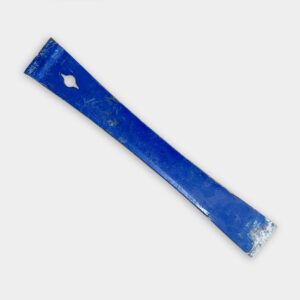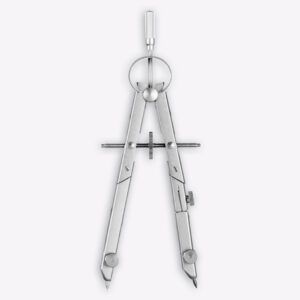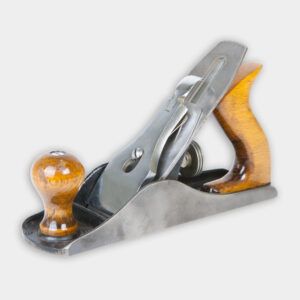Trimming an interior window can make a big difference in a room, adding character and polish to an otherwise plain opening. Though moderately challenging, this project is achievable for many do-it-yourself (DIY) enthusiasts once you understand and select your window trim. We’ll walk you through the process of trimming an interior window, from selecting materials to the final installation. This Old House general contractor Tom Silva demonstrates the step-by-step process in the video above, offering expert insights and practical tips.
Interior Window Trim Parts
Interior window trim, also known as casing, has both functional and decorative purposes. It covers the gap between the window frame and the surrounding wall, creating a finished look while also helping to insulate and protect against drafts. It can be made from aluminum, vinyl, fiber cement cedar, or preserved treated wood.
There are several components of window trim you’ll need to be familiar with for this project:
- Apron: The trim piece installed below the stool
- Casing: The main decorative molding that surrounds the window
- Extension jambs: Pieces that extend the window frame to match the wall depth
- Stool: The horizontal piece at the bottom of the window that extends beyond the casing
Choosing the Right Trim Style
When selecting trim for your windows, consider the following factors:
- Casing width: Residential homes typically have casing widths between 2 1/2 and 3 1/2 inches.
- Existing architectural style: You can choose from numerous window trim styles depending on your home’s design, whether you want traditional Colonial trim with an elaborate profile or something flat and minimalist for a clean, contemporary look.
- Finish options: Match the paint or stain to your decor.
- Material: Choose from wood, medium-density fiberboard (MDF), or vinyl.
Preparing To Trim an Interior Window
Before you begin trimming your interior window, gather the necessary tools and materials and prepare the work area. Silva installed 3 1/2-inch Colonial casings and used stock lumber for the remaining pieces. All of the wood and tools used can be found at a home center.
Tools and Materials Needed
- Brad nailer
- Compass
- Flat pry bar
- Hammer
- Hand plane
- Level
- Miter saw
- Pencil
- Sandpaper
- Shims
- Table saw
- Tape measure
- Wood glue
Removing Existing Trim
If your window already has trim, you’ll need to carefully remove it to avoid damaging the wall and window frame. Score along the edges of the trim with a utility knife to prevent paint or drywall damage. Next, gently pry off the existing casing, stool, and apron molding using a flat pry bar. Remove any nails left behind in the wall or window frame to provide a smooth surface for new trim installation.
Installing the Window Stool
The window stool is your trim work’s foundation and requires precise measurement and installation for a professional finish.
Measuring and Cutting the Stool
Measure and cut a piece of stool molding to fit between the windows, ensuring the ends are left long for trimming.
Hold the extension jamb and casing in place against the window, leaving a 1/4-inch reveal on the casing. Use a compass to transfer this measurement to the stool.
Mark the stool to the correct length based on the reveal measurement and cut it accordingly.
Positioning and Securing the Stool
Use a block plane and sandpaper to smooth the edges of the stool for a refined look.
Place the stool in its intended position and use shims to ensure it is level and square to the window. Using a brad nailer, drive nails through the stool into the window frame and wall studs to hold it securely in place.
Installing Extension Jambs and Casing
With the stool installed, you can proceed to install the extension jambs and casing, framing the window to complete the look.
Preparing the Extension Jambs
Use a table saw to rip the extension jamb pieces to the correct width so they fit snugly against the window frame. Measure and cut the extension jamb pieces to the appropriate length, ensuring a tight fit.
Draw a line 1/4 inch from the edge of each extension jamb to guide the placement of the casing.
Assembling the Trim Unit
Silva recommends assembling the extension jambs and window casings as a single unit for easier installation.
Screw the head jamb to the side jambs, pre-drilling holes to avoid splitting the wood. Spread wood glue on the back of the casing and position it along the marked lines on the extension jambs. Use a brad nailer to attach the casing to the extension jambs. Cut the casing corners at 45-degree angles with a miter saw to create clean joints.
Fitting and Installing the Trim Assembly
Check the assembled trim unit in the window opening for any gaps or required adjustments.
Use minimally expanding foam in the joints around the window and extension jambs for insulation. Secure the trim assembly to the window opening, ensuring it is level and plumb.
Attach the window stool to the casing with screws for added stability.
Adding the Finishing Touches
These final steps will help your trim look more polished and professional.
Installing the Apron
Measure the distance from the outside edge of one side casing to the other to determine the apron length. Cut the apron to the correct size, making any necessary angle cuts to fit smoothly against the stool. Apply wood glue to the back of the apron and nail it in place below the stool.
Final Adjustments and Cleanup
Use wood putty to fill any nail holes and sand smooth once it is dry. Seal any gaps between the trim and the wall for a seamless appearance. Match the trim to your desired finish by painting or staining it to complement your room’s decor.
Common Challenges and Solutions
If you run into any challenges, try the following fixes:
- Uneven walls: If the wall around the window is uneven, use shims to level the extension jambs and casing. This adjustment ensures the trim fits snugly and looks aligned.
- Gaps: Minimally expanding foam helps fill gaps around the window frame, providing insulation and a better fit for the trim.
- Matching styles: When existing trim styles in your home are no longer available, opt for stock trim pieces that closely resemble the original, even if the proportions differ slightly. The video showcases this approach.
Maintenance Tips
After successfully trimming your interior windows, you’ll need to maintain them to preserve their appearance. Here are some best practices:
- Regular cleaning: Dust and clean the trim regularly to maintain its finish and appearance.
- Inspect for damage: Periodically check the trim for any signs of damage, such as cracking or peeling paint, and address issues promptly.
- Repaint or restain: Over time, the paint or stain on the trim may wear. Repainting or restaining the trim can refresh its look and protect the wood.








